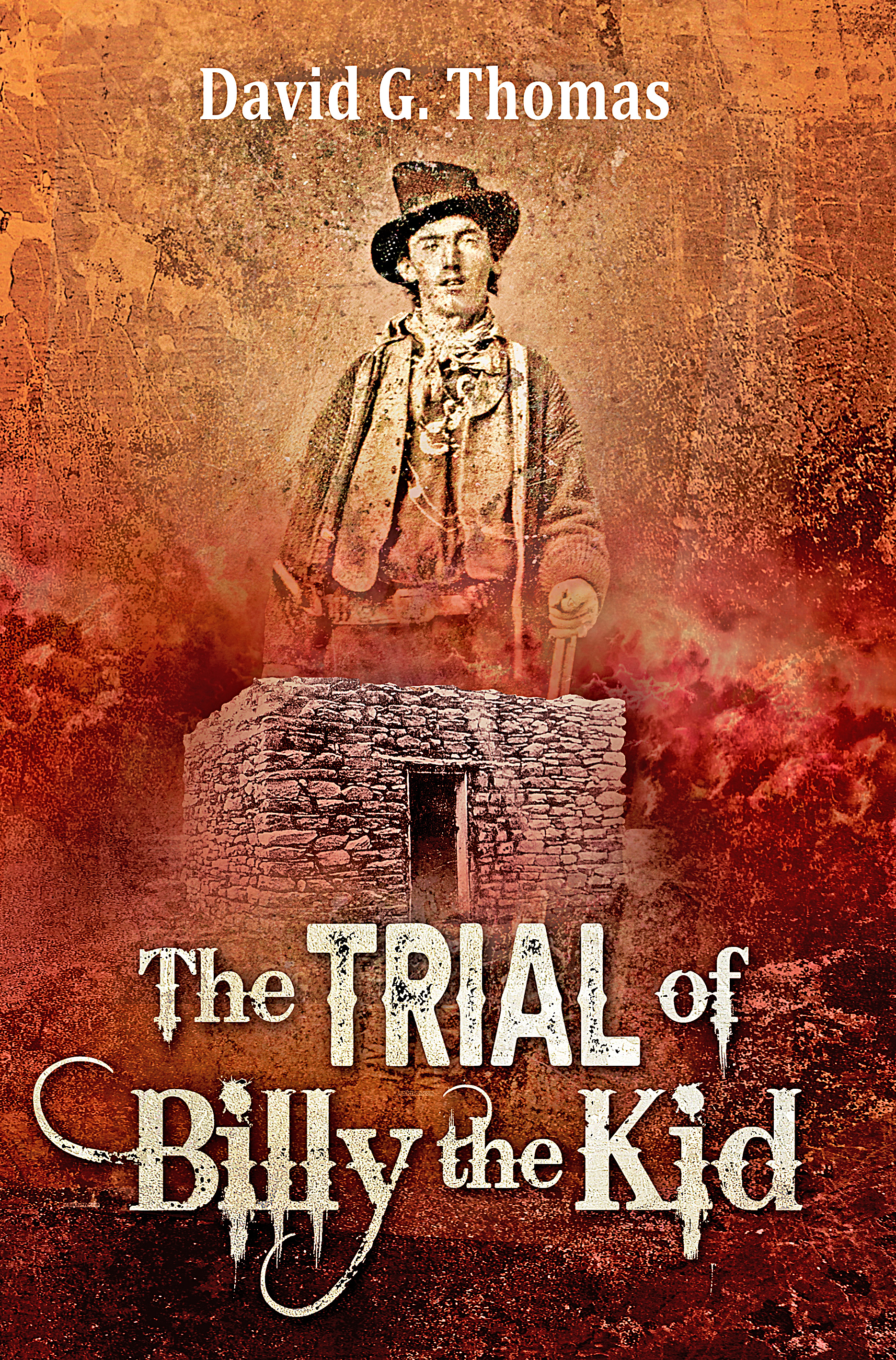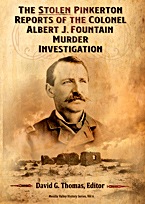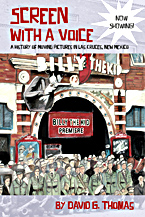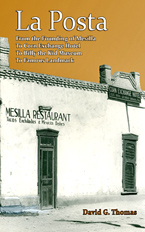Archive for September, 2006
Saturday, September 30th, 2006
Tree Regal
I think this is the oldest tree in Mesilla, perhaps the oldest in the valley. Why it’s growing in regal isolation on the edge of town, I do not know. Nor do I know how old it is.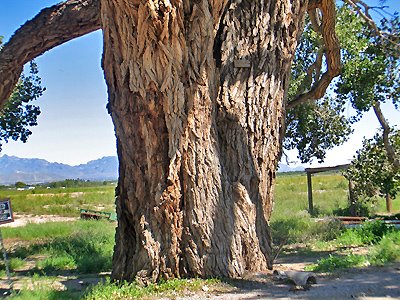
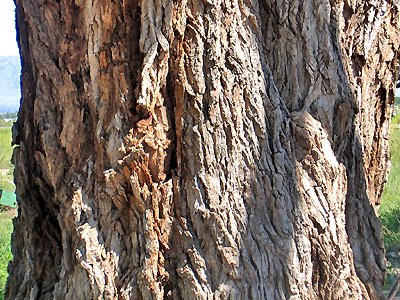
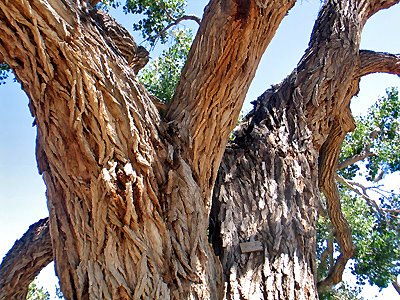
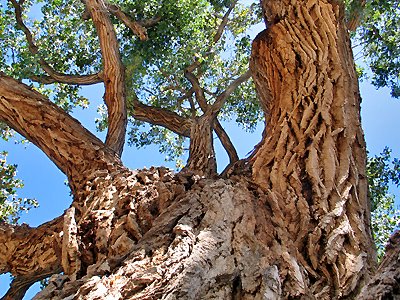
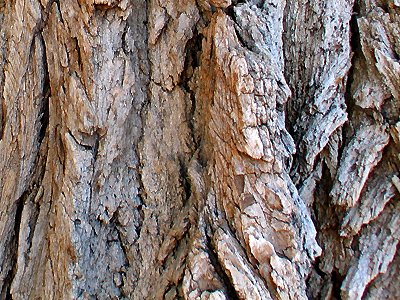
This tree has lived so long, survived so much — it should be recognized as the majestic living thing it is and protected. Vivat rex!
Tags: Oldest Tree, Mesilla
Friday, September 29th, 2006
Flood Irrigation
Pecan trees are irrigated by flooding, which is the only practical way to get water to the roots of the trees. Flood irrigation may appear wasteful, but it actually encourages deep root growth, which in turn reduces the amount of irrigation water required by the crop.


Tags: Flood Irrigation, Pecans
Wednesday, September 27th, 2006
Quiet Lanes
If you’re looking for a place without traffic jams, where life is still delightful, consider these tree-lined Mesilla lanes: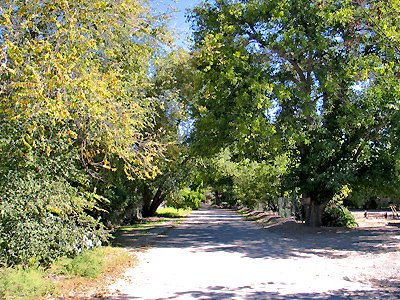
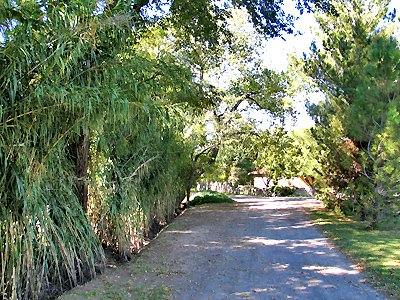
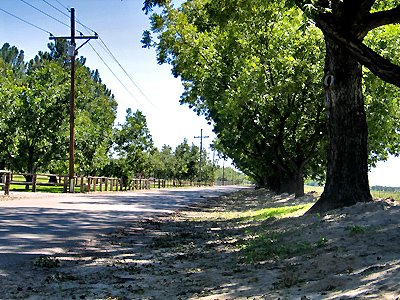
Tag: Mesilla, Traffic
Tuesday, September 26th, 2006
Cotton, Chile, Corn, Cabbage
Cotton is the number one crop around Mesilla. Here’s the Organ Mountains viewed over a cotton field just north of Mesilla:
Mesilla grows excellent chiles. Here’s the Organ Mountains viewed over a chile field just south of Mesilla:
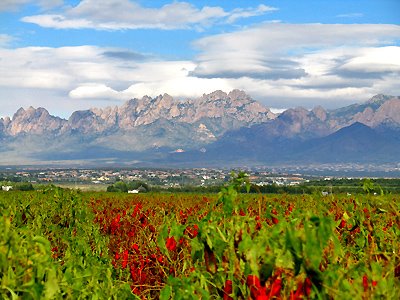
Here’s the Organ Mountains viewed over a corn crop:

And finally, here’s the Organ Mountains viewed over a cabbage crop:

Tags: Cotton, Chile, Corn, Cabbage
Sunday, September 24th, 2006
Welcome and Adios
One sign, two sides.
Welcome to Mesilla.

Thanks for Visiting Mesilla. Adios.
Tags: Mesilla Sign
Thursday, September 21st, 2006
Whole Enchilada Fiesta
The Whole Enchilada Fiesta is held annually “next door” in Las Cruces. It’s a huge area event that typically attracts 50,000 or more visitors.
The Festival begins Friday, September 22, and runs for 3 days.
The location is the Meersheidt/Hadley Sports Complex in Las Cruces. Here’s a map of the location: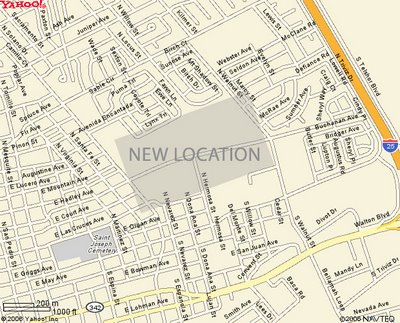
The events include food, live entertainment, pet parade, carnival, motorcycle and car show, and the making of the world’s largest enchilada.
The web site provides full details and times.
Tags: Whole Enchilada Fiesta, Map, Events
Tuesday, September 19th, 2006
Organ Mountains
If you look east from Mesilla, you can see the Organ Mountains. The highest peak in the range is 8,990 feet.
Here’s a view of the Organ Mountains from the north end of Mesilla, across an alfalfa field.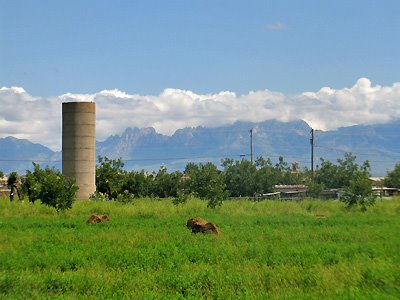
Tags: Organ Mountains Viewed From Mesilla
Monday, September 18th, 2006
"Fall Getaway"
The October issue of Sunset magazine recommends Mesilla as a top getaway location for a weekend trip.
The article in the magazine covers many of the obvious things to do in Mesilla, including the restaurants and shops.
Tags: Sunset Magazine, Travel Getaway
Saturday, September 16th, 2006
18,000+ Acres
There are 18,000+ acres of pecans in this county (Doña Ana).
How many trees is that?
I don’t know, but you can get some idea of the miles and miles of trees from these satellite photos of pecan groves just south of Mesilla.
In a mature grove, trees are spaced about 30 feet apart, resulting in about 48 trees per acre.
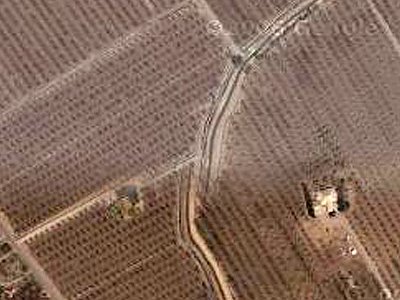
The average yield for a pecan grove is about 600 pounds an acre.
This area produces higher than average yields, but most importantly, the quality of pecans grown here is unmatched anywhere else. High quality pecans require cold in the winter and heat in the summer, but not too cold or too hot. The climate here is just right for pecans.
Most growers in this area do not use chemical insecticides to control pests — instead, growers use natural predators like ladybugs and lacewing flies.
New Mexico Pecan Growers Association
Tags: Pecan Quality, Yield
Wednesday, September 13th, 2006
Adobe Pulled Down
Yesterday afternoon, several miles south of Mesilla, I watched the last wall of an adobe structure pulled down. There were several good reasons the old home had to be demolished, including public safety.
Here’s the wall about to go: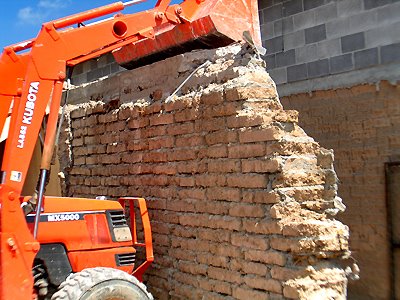
I spoke with the owner, who told me the structure was not that old, having been built about 1950.
How do you date adobe? Here’s one way: 
Notice that the mortar used between the adobe bricks is cement. That is a practice that began in the late 1940s and largely defeats the advantages of adobe, because cement is an excellent conductor of heat. An adobe structure that uses cement mortar instead of the traditional mud will be hotter in the summer and cooler in the winter.
Here’s the wall going down: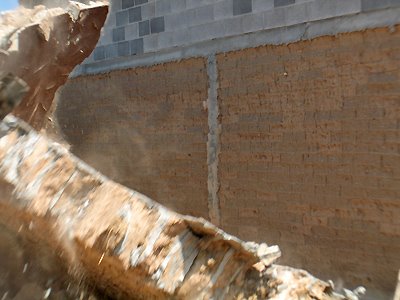
Tags: Adobe Wall
